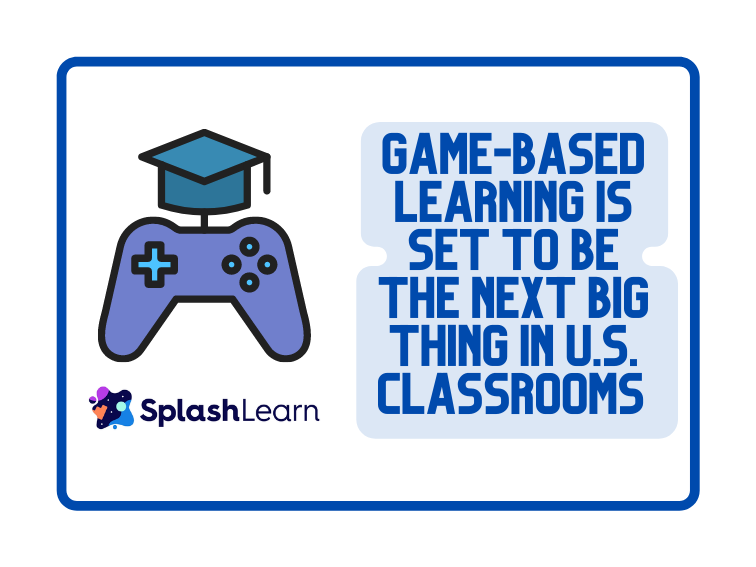Game-Based Learning Is Set To Be The Next Big Thing In U.S. Classrooms
This is a sponsored post. Regardless of sponsorship status, we never endorse a tool or platform that we would not have otherwise considered in lieu of sponsorship. You can read more about our sponsored content policy here.
contributed by Joy Deep Nath, Co-Founder, SplashLearn
Advancements in digital technology have impacted all aspects of life over the past two decades, but the last year and a half was exceptional–technology has ingrained itself into our lives like never before. In fact, one space where technology didn’t hold much sway earlier was the education sector. Digital technology was not considered mainstream in the world’s schools, and some estimates said that digitization of classrooms stood at just 2%, at the end of 2019.
The revenues in the game-based learning market were predicted to be more than $24 billion by 2024. But due to the disruption caused by the COVID-19 pandemic, the global investment in learning technology companies surged to a whopping $36.38 billion in 2020 itself, up drastically from the $18.66 billion invested in 2019 and more than double the $16.34 billion invested in 2018, according to Metaari.
COVID-19 pandemic has catapulted the importance of technology in the edtech sector and thrown up plenty of opportunities for growth in the classrooms. There are many different modes and methods in digital education like Virtual Reality (VR), Augmented Reality (AR), Video-Assisted Learning and Online Tutoring, etc. One form that has shown significant and impactful growth in recent months, with no signs of slowing down is game-based learning. Reports show that the spending will only grow in the coming years.
The biggest, unseen and unexpected catapult to online learning of any sort has been COVID-19. Along with this, there are other trends, like the rapid emergence of social media, disposable incomes, increasing penetration of smartphones, rising access to high-speed internet, etc. that have also contributed and will continue to fuel the rise of game-based learning in the years to come.
Heavy Investments Into The Edtech Sector
Edtech Venture Capitalists have grown a whopping 32x since 2010. In 2020 itself, over 1,500 deals have been recorded and almost a third have been in the K12 segment. This is also because of the rising demand for quality education with a modern and interactive approach suited to the needs of the time.
The Rising Popularity Of Mobile Devices
Even if they don’t own one themselves, many children today have access to mobile devices, whether it’s a household tablet or their parent’s smartphone. In the U.S., for example, 81% of U.S. adults own a smartphone, which is even higher than those who have access to broadband internet at home. The numbers are not as high in lower-income households, but they’re still significant. According to Pew Research Center, smartphone ownership is at 78% for those with annual incomes between $30,000 and $49,999, and 71% for those who make less than $30,000 each year. And as many parents will tell you, today’s kids love to play games on mobile devices, making game-based learning a key opportunity for both parents and educators.
A Greater Focus On Personalized Learning
An increasing number of educators are using adaptive software that can adjust to a student’s skill level, giving them a more personalized and effective educational experience. The general idea is that taking each student’s unique skill set, experiences, preferences, background, and abilities into account gives them a customized experience that can positively impact learning outcomes. While some have indicated concerns over too much screen time for kids, parents and educators have the ability to make student screen time more valuable through game-based learning.
Parents And Educators Increasingly Realize That Game-Based Learning Works
Even though game-based learning dates back to the 1970s and ’80s with the likes of The Oregon Trail, video gaming in those days developed a reputation among many adults that it was a mindless and mundane activity with little or no educational value. Attitudes have changed, however, and gaming now stands as a legitimate form of entertainment that has its own benefits. Even more importantly for parents and educators, there is a whole new generation of educational-based games on the market that are both fun and engaging to kids, as well as effective at helping them learn across multiple subjects. It addresses a key need of the hour because it teaches students in a way that equips them with future-ready skills such as critical thinking and problem-solving.
While these trends will each play a significant role in the inevitable growth and wider adoption of game-based learning, challenges still remain. For example, teachers might need game-based professional training to obtain a full grasp of the concepts and make the most effective use of game-based educational tools. But as recent circumstances have shown, teachers rose to the challenge and went digital almost overnight, then this too can be tackled with the right mindset. The next step will be to include technology and game-based learning as an integral part of curriculums, as opposed to a supplemental component. Only then will students maximize the benefits that game-based learning has to offer.
